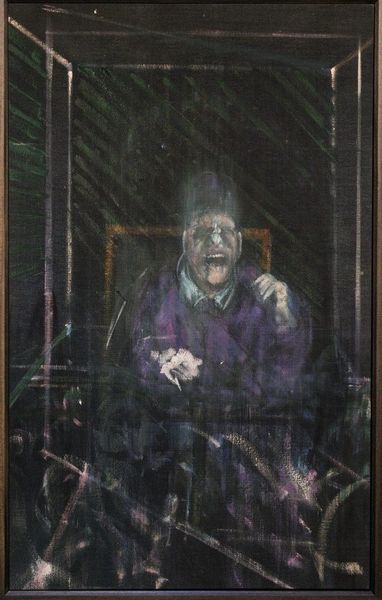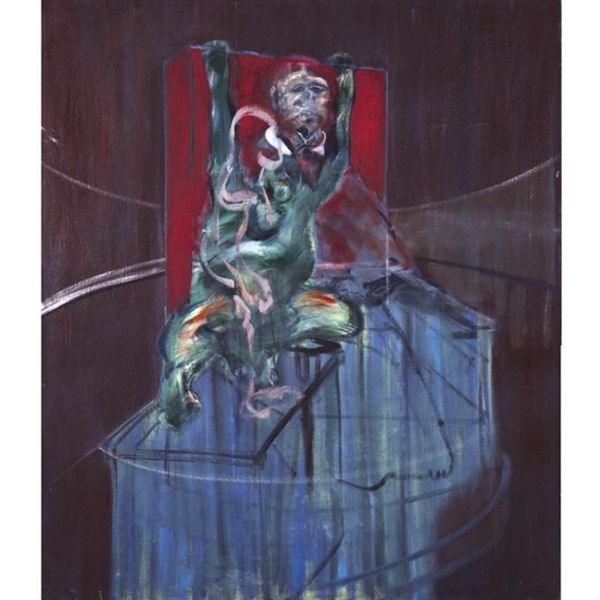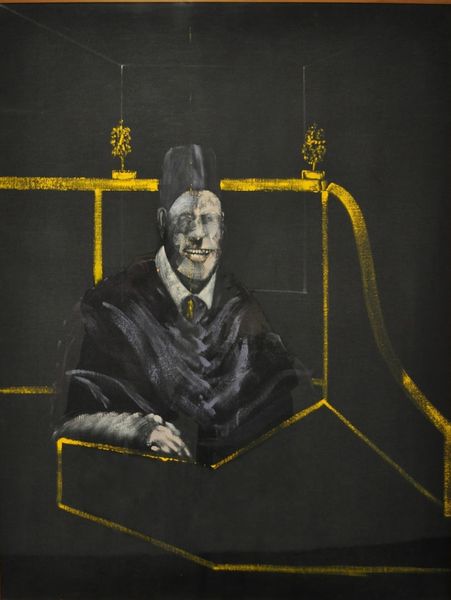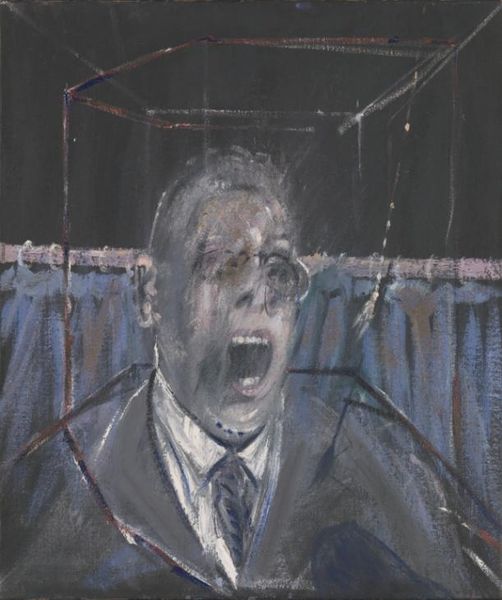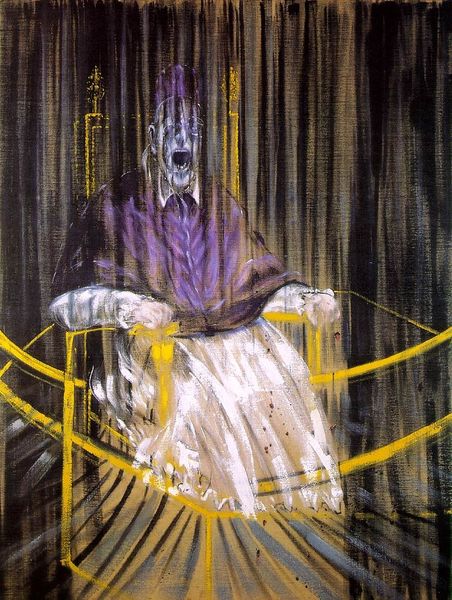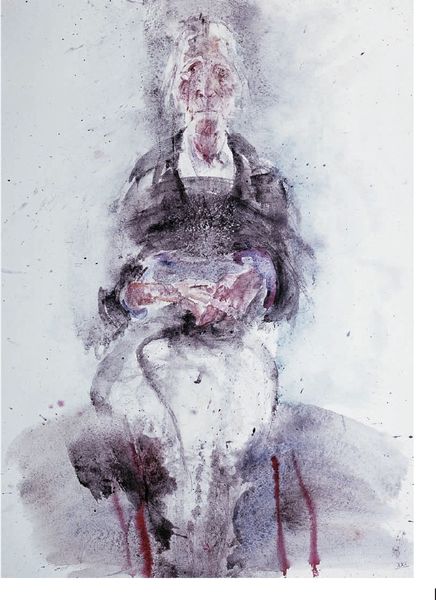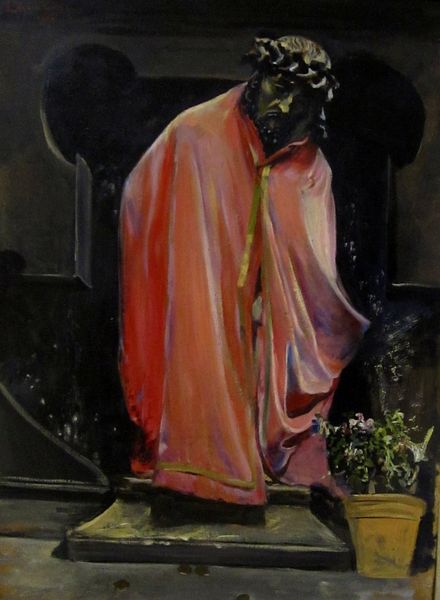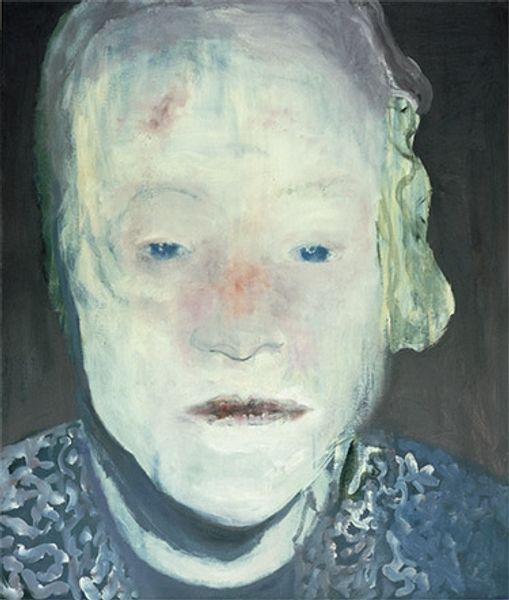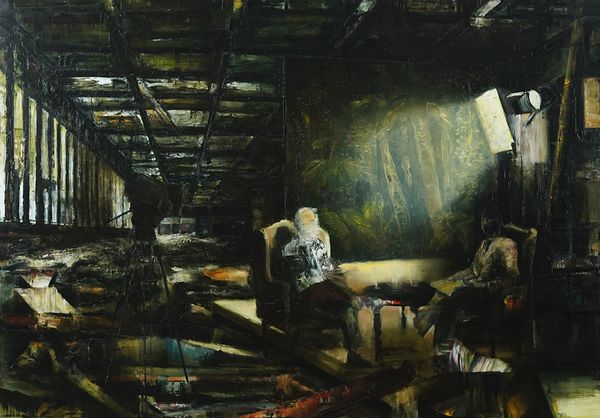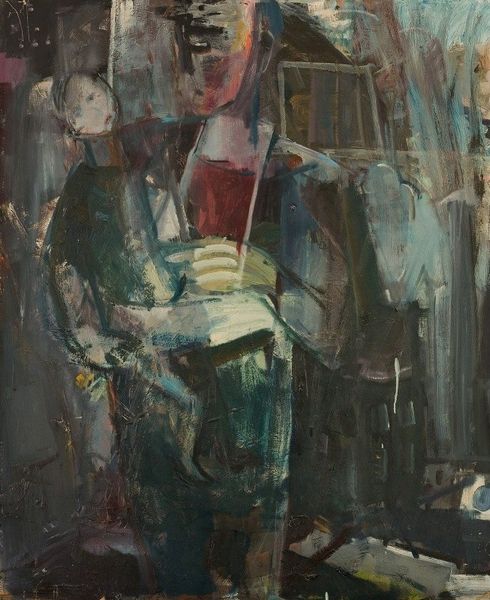
Copyright: Francis Bacon,Fair Use
Editor: This is Francis Bacon's "Pope I," painted in 1951 with oil paint. The heavy brushstrokes and the deep, shadowy background create an unsettling and somewhat claustrophobic atmosphere. What symbols or historical references do you notice in this work? Curator: The figure of the Pope, isolated and distorted, is heavy with symbolic weight. Consider the historical context; the papacy has long been a potent image of authority, faith, and even fear. What cultural memories does this imagery evoke? Editor: I see the stark contrast between the ornate chair and the Pope's almost melting features, maybe it's hinting at the vulnerability behind power. Curator: Precisely. Bacon is dismantling the traditional iconography. Notice how the geometric cage surrounding the figure evokes a sense of imprisonment, perhaps suggesting the burdens of leadership, or even a spiritual crisis. Do you sense any echoes of Velázquez's portrait of Pope Innocent X, which Bacon famously responded to? Editor: Now that you mention it, I do see the resemblance, but Bacon’s pope seems to be trapped in his own representation. Is it fair to read it as questioning the very nature of power and representation itself? Curator: Indeed, and the distortion! Bacon amplifies emotional and psychological impact through visceral visual cues. The image resonates through time precisely because it strips bare the cultural facade. How does that affect your understanding of contemporary readings of power? Editor: It definitely gives me a new way to look at historical portraits. Thanks for illuminating the layers of symbolism! Curator: My pleasure. It is in deconstructing these potent symbols that we can begin to truly understand their lasting impact.
Comments
No comments
Be the first to comment and join the conversation on the ultimate creative platform.
